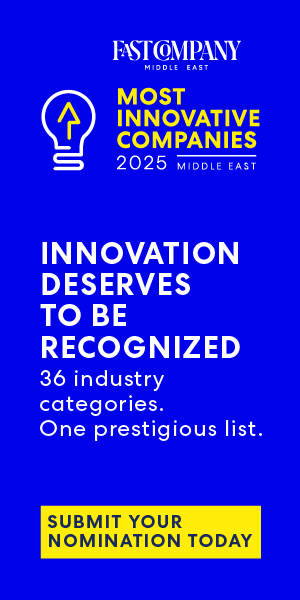- | 9:00 am
Why interest rate cuts could boost funding for startups in the Middle East
Startups across all sectors, including fintech, AI, e-commerce, and others, stand to benefit. Those in the late stage could see the most upside.

Last month, the US Federal Reserve cut interest rates by 0.25% for the first time in 2025. The next Federal Reserve meeting, slated for October 28, is also widely expected to cut rates further, increasing the money supply and stimulating the economy.
This could be good news for startups in the Middle East. Consecutive interest rate cuts give startups more access to capital. Lowering interest rates reduces the cost of borrowing and makes loans more affordable.
After the VC winter, which began in 2022 and was characterized by investors becoming more cautious because of inflation and rising interest rates, the cuts signal fresh air for startups in the region.
According to data platform Magnitt, startups in MENA raised $1.5 billion in the first half of 2025, exceeding the total for the whole of fiscal year 2024. This figure also marks the strongest half-year performance since 2022.
“With the interest increases in the past, this resulted in money moving away from VC in general into the less risky asset classes, such as treasury bills,” says Mohamed Hussain, Principal at Anara Capital. “With interest rate cuts, which are happening at the moment, we expect that money would flow back into higher risk asset classes, including VC, given that the return on treasury bills and other instruments is lower than before.”
OPPORTUNITIES FOR STARTUPS
While startups across the board, including those in fintech, AI, e-commerce, and other sectors, stand to benefit from anticipated consecutive rate cuts, those in late stage could see the most upside, says Philip Bahoshy, founder of Magnitt.
“Interest rate cuts tend to impact late-stage investment more than early-stage, because your cost of capital goes down and the need to allocate to other sectors or asset classes becomes more appealing,” he says.
So far this year, there has been promising interest in late-stage investments in MENA. In the first half of 2025, there were two mega deals, Ninja’s $250 million and Tabby’s $160 million round, which accounted for 27% of total capital deployed, up from 16% during the same time last year, according to Magnitt.
Meanwhile, the share of Series A and B rounds exceeding $20 million also jumped to 42%, up from only 10% last year, according to the same report, reflecting investor appetite in later stage startups especially those with proven traction and scalability.
Comfi, a UAE-based fintech startup that has raised $60 million to date and is looking to approach large institutional investors next year, is optimistic about the future, especially if there are consecutive rate cuts going forward. Besides making capital cheaper, the startup anticipates that it can also make the product more accessible to customers.
“If we take a look at it from a long-term perspective, and if there are going to be successive cuts, then of course what might eventually happen is that we might become friendly in terms of our pricing for our customers,” says Amal Abdullaev, CRO at Comfi. “Right now, we have onboarded 800 SMEs in the UAE in less than two years and are growing very quickly.”
IMPACT OF DROPPING OIL PRICES
Despite the opportunities, there are also looming concerns, particularly given that these cuts are occurring amid falling oil prices.
According to Macrotrends and Trading Economics, Brent crude dropped to about $62 per barrel in mid-October from $70 per barrel earlier this year. This drop creates fiscal pressure on Gulf economies reliant on oil revenues, particularly for Gulf sovereign wealth funds, which have been a significant stimulus for the venture ecosystem in the last few years.
“Oil prices have dropped since the beginning of the year,” says Bahoshy. “So, I’m now trying to have to balance, what is the positive impact of interest cuts coming down that is likely to spur on global capital to the region, against the backdrop of falling oil prices that could become a challenge for capital deployment in the region from sovereigns or the funds of funds that have been historically stimulating capital for venture in the GCC.”
According to Global SWF, Gulf Sovereign Wealth Funds (SWFs) collectively managed $4.9 trillion in assets in 2024, with projections growing to $7 trillion by 2030. The most prominent ones in the region, such as Saudi Arabia’s Public Investment Fund, the Qatar Investment Authority, the Mubadala Investment Company, and the Abu Dhabi Investment Authority, while investing in international ventures, they also support regional startups, especially those in AI, fintech, healthcare, and renewable energy.
For example, Mubadala has been a key investor in fintech startup Tabby, participating in multiple funding rounds, helping the company reach a valuation of $3.3 billion. Sanabil, a wholly-owned subsidiary of PIF, has also participated in multiple funding rounds, including Series B and C, supporting fintech startup Tamara to reach a valuation of over $1 billion.
“Over the past two to three years, we’ve seen local investors become more interested in startups and VCs,” says Hussain.“So, when the gap happened, when foreign investors pulled out of the region, sovereign wealth funds filled it, especially in the GCC. Now, we’re seeing more local and regional players become more active. So, as a whole, the region is now less reliant on foreign investors than before, which is a positive thing.”
BUSINESS FUNDAMENTALS STILL MATTER
Regardless of prospective investment opportunities, startups still need to pay attention to business fundamentals. Investors still prioritize unit economics, the path to profitability, and capital efficiency, which enable them to analyze a business’s ability to scale effectively and become financially sustainable.
With easier access to capital, Hussain hopes that startups will implement the lessons learned from the last few years to focus more on sustainable growth over rapid expansion. “Startups still need to think about the margins, path to profitability, financial sustainability, and capital efficiency,” he says.
“These are all good lessons from the hard times, so we hope that this mentality continues with the additional capital, and not going back to raising as much capital as possible without efficiently deploying it, and forgetting that you still need to run the business sustainably.”






































